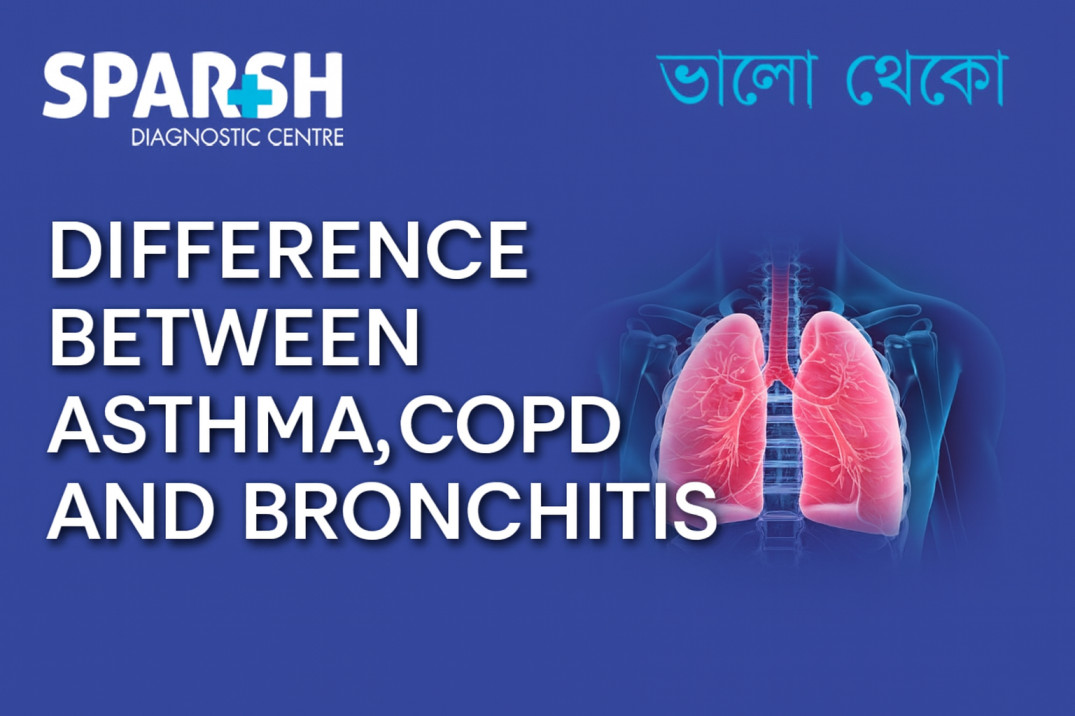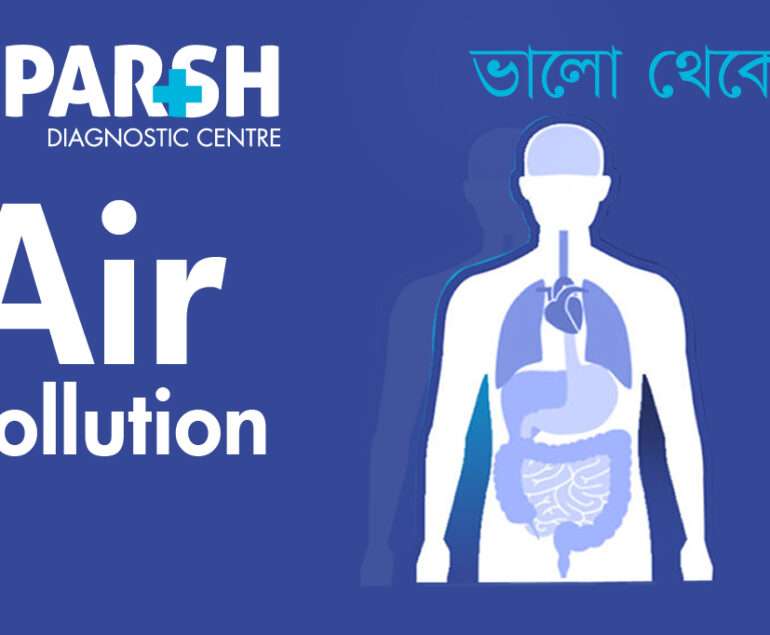Breathing problems are among the most common reasons people visit doctors today. While asthma, chronic obstructive pulmonary disease (COPD), and bronchitis all cause coughing, wheezing, and shortness of breath, they are not the same condition. Each has unique causes, symptoms, and long-term effects on lung health.
Understanding the difference between asthma, COPD, and bronchitis is crucial for proper diagnosis and treatment. Let’s explore how these three respiratory conditions differ and what you can do to manage them effectively.
What Is Asthma?
Asthma is a chronic inflammatory disease of the airways that makes breathing difficult due to temporary narrowing or swelling of the bronchial tubes. It’s often triggered by allergens, exercise, or infections.
Key Features of Asthma:
Reversible airway obstruction
Triggered by allergens, dust, or cold air
Common in children and young adults
Episodes (attacks) are temporary and controllable
Common Symptoms of Asthma:
Tightness or pain in the chest
Persistent cough, especially at night or early morning
Asthma Triggers:
Allergens like pollen, dust mites, mold, or pet dander
Cold air or sudden weather changes
Physical exercise
Respiratory infections
Diagnosis:
Doctors use:
Allergy tests
Peak flow measurement
Treatment:
Inhaled corticosteroids (to reduce inflammation)
Bronchodilators (to relax airway muscles)
Avoiding triggers
Asthma is not curable, but it’s highly manageable with medication and lifestyle changes.
What Is COPD (Chronic Obstructive Pulmonary Disease)?
COPD is a progressive lung disease that causes long-term airflow limitation. It includes two main conditions:
Chronic bronchitis — inflammation and mucus buildup in the airways
Emphysema — damage to the air sacs (alveoli) in the lungs
COPD is primarily caused by long-term exposure to irritants, especially cigarette smoke. Unlike asthma, COPD symptoms are not fully reversible.
Key Features of COPD:
Permanent narrowing of airways
Common in older adults, especially smokers
Gradually worsens over time
Irreversible damage to lungs
Common Symptoms of COPD:
Chronic cough with mucus
Shortness of breath, especially during exertion
Frequent respiratory infections
Primary Causes of COPD:
Occupational exposure to dust and chemicals
Diagnosis:
Arterial blood gas analysis
Treatment:
Bronchodilators and inhaled steroids
Pulmonary rehabilitation
Oxygen therapy in severe cases
COPD cannot be cured, but early detection and treatment can slow its progression and improve quality of life.
What Is Bronchitis?
Bronchitis is the inflammation of the bronchial tubes, which carry air to and from the lungs. It can be acute or chronic:
Acute bronchitis: Short-term inflammation usually caused by viral infections like cold or flu.
Chronic bronchitis: Long-term inflammation and mucus buildup that lasts for months and often recurs; it’s a type of COPD.
Key Features of Bronchitis:
Inflammation and mucus buildup in airways
Can be short-term (acute) or long-term (chronic)
Usually caused by infections or irritants
Symptoms of Acute Bronchitis:
Persistent cough (with or without mucus)
Chest discomfort
Fatigue
Sore throat or nasal congestion
Symptoms of Chronic Bronchitis:
Cough with sputum for at least 3 months per year, for 2 consecutive years
Shortness of breath
Frequent chest infections
Causes:
Viral or bacterial infections (acute bronchitis)
Long-term smoking or air pollution (chronic bronchitis)
Diagnosis:
Physical examination
Sputum test
Chest X-ray
Lung function tests
Treatment:
Rest and fluids for acute cases
Cough suppressants or bronchodilators
Avoiding smoking and irritants
Asthma vs COPD vs Bronchitis: Comparison Table
| Feature | Asthma | COPD | Bronchitis |
|---|---|---|---|
| Type | Chronic inflammatory disease | Progressive obstructive disease | Inflammatory (acute or chronic) |
| Age of Onset | Usually childhood or young adulthood | Usually after 40 years | Any age (acute); adults (chronic) |
| Main Cause | Allergens, environmental triggers | Smoking, long-term irritant exposure | Viruses (acute), smoking (chronic) |
| Reversibility | Fully reversible with medication | Partially or non-reversible | Acute is reversible; chronic is not |
| Mucus Production | Minimal to moderate | Moderate to heavy | Heavy (especially in chronic) |
| Symptoms Pattern | Episodic (comes and goes) | Persistent and progressive | Acute (temporary) or chronic (long-term) |
| Key Treatment | Inhalers, avoid triggers | Smoking cessation, inhalers, oxygen | Rest, antibiotics (if bacterial), avoid irritants |
How to Differentiate Between Asthma, COPD, and Bronchitis
While symptoms often overlap, the pattern, duration, and triggers can help differentiate:
Asthma: Episodic wheezing and breathlessness triggered by specific factors. Usually reversible with inhalers.
COPD: Persistent symptoms that worsen over time, often in smokers or those exposed to pollution. Not fully reversible.
Bronchitis: Cough with mucus; acute cases resolve in weeks, while chronic cases indicate long-term airway damage.
A pulmonary function test or spirometry can help identify the exact condition and severity.
Shared Risk Factors
While distinct, all three conditions share several risk factors:
Smoking or exposure to secondhand smoke
Air pollution
Dust and chemical exposure at workplaces
Genetic predisposition
Repeated respiratory infections
Avoiding these risk factors plays a vital role in prevention.
Diagnostic Tests at Sparsh Diagnostic Centre
At Sparsh Diagnostic Centre, we use advanced diagnostic techniques to evaluate lung function and determine the exact respiratory condition.
Common Tests Include:
Spirometry: Measures airflow and lung capacity.
Chest X-Ray: Detects lung damage or inflammation.
Allergy Tests: Identifies asthma triggers.
Blood Tests: Checks oxygen and carbon dioxide levels.
Early diagnosis ensures timely management and prevents disease progression.
Managing and Preventing Respiratory Diseases
1. Quit Smoking
The single most effective step for preventing COPD and chronic bronchitis.
2. Avoid Triggers
Stay away from dust, fumes, and air pollutants. Use air purifiers indoors if possible.
3. Stay Vaccinated
Flu and pneumonia vaccines can reduce complications from respiratory infections.
4. Maintain a Healthy Weight
Excess weight can worsen breathlessness and lung function.
5. Exercise Regularly
Light exercises like walking or yoga can improve lung capacity.
6. Regular Health Checkups
Get routine lung function tests and chest imaging at trusted diagnostic centers like Sparsh Diagnostic Centre.
Frequently Asked Questions (FAQ)
1. Can a person have both asthma and COPD?
Yes. This condition is called Asthma-COPD Overlap Syndrome (ACOS), where patients show features of both diseases. It requires a customized treatment plan.
2. Is chronic bronchitis the same as COPD?
Chronic bronchitis is one of the two main conditions that make up COPD, the other being emphysema.
3. Can asthma turn into COPD?
Not exactly, but poorly controlled asthma can cause long-term airway damage that resembles COPD in older adults.
4. How long does acute bronchitis last?
Acute bronchitis usually resolves within 2 to 3 weeks, though coughing can persist a little longer.
5. Can asthma or COPD be cured?
Neither asthma nor COPD can be fully cured, but they can be effectively managed with proper medication, lifestyle changes, and monitoring.
6. What is the best diagnostic test to differentiate these conditions?
Spirometry is the most reliable test to assess airflow limitation and help differentiate asthma, COPD, and bronchitis.
7. When should I see a doctor for breathing problems?
If you have persistent cough, shortness of breath, chest tightness, or wheezing lasting more than two weeks, consult a pulmonologist immediately.
While asthma, COPD, and bronchitis share similar symptoms, understanding their differences helps ensure accurate diagnosis and treatment.
Asthma involves reversible airway narrowing.
COPD causes permanent, progressive airflow obstruction.
Bronchitis involves airway inflammation that can be temporary or chronic.
Early detection through lung function tests and chest imaging at diagnostic centers like Sparsh Diagnostic Centre can help manage these conditions effectively and improve your breathing quality.
Take control of your lung health today.
Book a respiratory check-up or spirometry test at Sparsh Diagnostic Centre and breathe easy again.
#BhaloTheko
Disclaimer:
No content on this site, regardless of date, should ever be used as a substitute for direct medical advice from your doctor or other qualified clinician.

![]()





